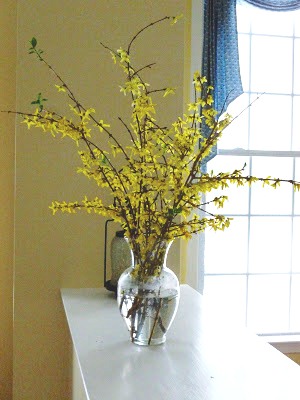Bring Spring Inside
Late winter is a great time to bring some color into your home with branches from your spring-flowering trees and shrubs. Forcing branches into bloom is easy and this is the perfect time of year to do this simple project. It can take anywhere from 1 to 6 weeks to initiate flowering (depending on the species) but the colorful blooms that seem to pop open before your eyes are well worth the wait.
Timing
The best time to cut branches for forcing indoors is when the buds begin to swell in late winter or early spring. For most spring-flowering trees and shrubs this is February and March. Very few plants will force earlier since the buds must experience a period of dormancy and a minimum cold span before they will open. If you try to force a particular plant into bloom and it does not work, it may be too early. Try again after waiting several weeks.
Good Choices for Forcing
The suggested plants listed here are grouped together according to their earliest cutting time.
January (late): pussy willow, witch hazel
February (early): forsythia, Cornelian cherry dogwood
February (late): quince, silverbell, flowering cherry, redbud, barberry
March (early): flowering dogwood, magnolia, crabapple, pear, serviceberry, azalea
March (late): mock-orange, lilac, spirea
How to Harvest Branches
Late winter is the best time to prune deciduous trees and large shrubs so choose branches you intend to remove anyway. Pruning on a mild winter day when the temperature is above freezing is ideal. The branches and buds are softer and will be better able to make the transition from cold to warm. Look for plump flower buds – they will appear round and fat as opposed to leaf buds which are typically smaller and pointed. Choose branches from the previous season located towards the top of the plant. When cutting the branches prune to a bud or side shoot making the cut about ¼ inch above the bud. Cut the branches at an angle and be sure to cut them long enough (1-3 ft.) to stand out in a vase for an attractive display.
Processing the Branches
Gather the cut branches and bring them inside. Prepare a bucket of warm water (100°-110°F) with floral preservative mixed according to the package directions and set aside. Fill a sink (or tub) with very warm water – as warm as you can tolerate without scalding your hands. (Note: Very warm water is important because it contains the least amount of oxygen. If oxygen gets into the stems it can block water from being taken up.) Holding the stems underwater recut them at an angle 1-2 inches above the original cut. For larger branches – around ½ inch in diameter – split the bottom inch of them stem in half to allow more of the interior of the stem to take up water. Then immediately place the stems in the prepared bucket of water.
At this point you can do one of two things. Simply store the stems in the bucket of water in a cool location (45°-55°F) then arrange the branches for display when the first buds begin to show color. Or, immediately create an arrangement, place it in your home and watch as the buds slowly swell and spring into bloom. In either case, to keep the branches healthy, change the water and add new preservative each week or when you notice the water starting to discolor. The stems should also be recut at this time to maximize water uptake. Both before and during bloom, place the branches away from bright, direct sunlight or any direct heat source. This will dry out the buds and branches and reduce overall bloom color and quality. If these conditions can be met your blooms should last for at least a week. Branches forced for foliage will last even longer.
Most of the plant material that forces well is readily available in your backyard. By cutting several branches each week you can have a continuous show of color each week as winter turns to spring.
Jan Gowen, Kemper Horticulture Assistant




Leave a Reply
You must be logged in to post a comment.